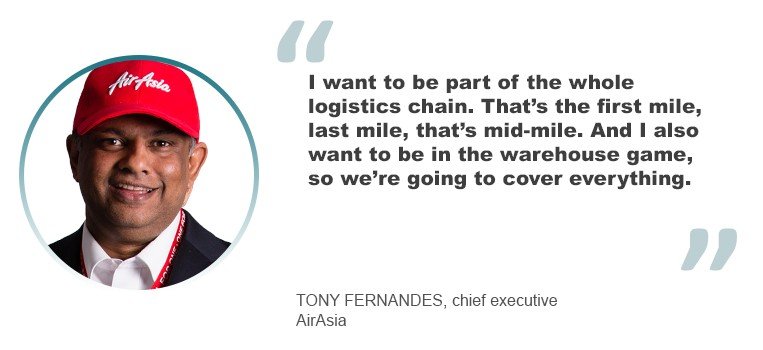When UPS presented its results for the second quarter, management was in a jubilant mood. Consolidated revenue was up 14.5% to US$23.4 billion, while consolidated operating profit soared 47.3% to reach US$3.3 billion.
CEO Carol Tomé, whose mantra has been “better not bigger,” declared that the integrator was “winning in the fastest growing parts of the market” and driving sustainable revenue per piece growth. Results across all segments were better than anticipated, she noted.
Financial markets were less impressed and sent the company’s shares down 8.7% on the day the results were revealed. This was in response to the fact that UPS’s average daily package volume in the US dropped 2.9% in the quarter year-on-year. One research analyst wrote that “declining average daily volume and higher than expected unit costs are likely weighing on investor sentiment, with some reading the result as an indication that the pandemic-driven demand trend is slowing.”
Presumably many shippers were not very impressed with UPS’s results, nor with those of FedEx, which reported record earnings for the quarter ended May 31, with net income of US$1.87 billion, up from a loss of US$334 million a year earlier. There is widespread feeling that the two large integrators, which have been visibly in pursuit of higher margin business, have bolstered their results with questionable surcharges. Moreover, many shippers felt they were dropped in favour of more profitable business.
The latest salvo in the ongoing surcharge saga came in late June from UPS. It announced two rounds of surcharges for shipments that require additional handling. These rose to US$3.50 on July 4 and will climb to US$6 on October 3. Outsize shipments set shippers back US$40 since July 4, up from previously US$8.55, and will climb to US$60 in October. Also in October, UPS will start charging an additional US$250 per package on shipments beyond its maximum limits.
Shipments that are awkward to handle have been the target of earlier surcharge increases too, reflecting the integrator’s desire to reduce this type of traffic in its system. The drive to higher margins is also hitting large shippers, whose volume discounts make their business less attractive than that of small and mid-sized clients, who usually have to pay full or near-full rates.
Parallel to the increased surcharges on non-standard packages UPS hit clients that have shipped over 25,000 packages during any week since February 2020, before the pandemic impacted traffic in the US. The extent of the new fees depends on the number of parcels they send out on average per week in the coming peak season. If their traffic is over 500% of their February 2020 levels, they face as much as US$6.15 more per package.
The integrators have been unapologetic about their drive to cultivate higher margin traffic at the expense of less lucrative customers, but the timing and duration of several surcharges have left shippers feeling milked dry for profit. UPS billed the new fees as peak season surcharges.
One parcel consultant noted that some of the increase kicked in on July 4. “Whose peak season is that? Certainly not sellers’,” he said, adding that peak surcharges had already been in place for over a year.
What stirred a lot of resentment was the way FedEx Freight went about this in June. On June 11, a Friday, it informed some 1,400 clients that it would no longer move their business as of the following Monday, sending them scrambling for alternatives to move their shipments. They were told that this was part of “customer specific actions to control capacity and avoid backlogs in the most capacity constrained freight service centres.”
Cathy Morrow Roberson, founder and chief analyst of Logistics Trends & Insights, remarked that last year both FedEx and UPS had hit customers with changes at short notice, albeit not as drastic as this one.
A few days later, FedEx Freight reportedly had to row back and reinstate some of those jettisoned customers. They turned out to be suppliers to large FedEx customers on the parcel side, who were not at all pleased with this tactic.
A week before it abruptly dumped 1,400 clients, FedEx Freight had announced a new surcharge to high-density areas, something that both large US integrators have also done in the parcel business.
With shipper discontent high, regional parcel carriers see an opening and are expanding their reach. In its most recent move, LaserShip pushed into Tennessee in May. It has added 979 ZIP codes this year and now offers same-day and next-day delivery in 20 states and Washington, DC. Lone Star Overnight has added Missouri, Illinois and Kansas to its footprint and simultaneously broadened its coverage of Louisiana and Arkansas, boosting its reach from 32 million consumers to 43 million.
In the international arena Maersk has taken a decisive step to expand in the parcel sector. In late June it announced the takeover of US parcel fulfillment provider Visible Supply Chain Management for US$838 million. The company operates nine fulfillment centers and handles about 200,000 packages a day. According to the shipping giant, this acquisition will enable it to reach 75% of the US direct-to-consumer market in 24 hours and 95% within 48 hours.
In Europe, Maersk is poised to take over B2C Europe Holding for US$86 million to acquire e-commerce fulfillment capabilities.
“We are bringing on board a lot of ocean customers where we have had discussions around e-commerce but never had the capabilities to bring them on board before we made these acquisitions,” said Vincent Clerc, CEO of ocean and logistics at Maersk in Copenhagen.
In a tight market where shippers feel squeezed by the incumbent parcel giants, there is lively interest in alternatives.




